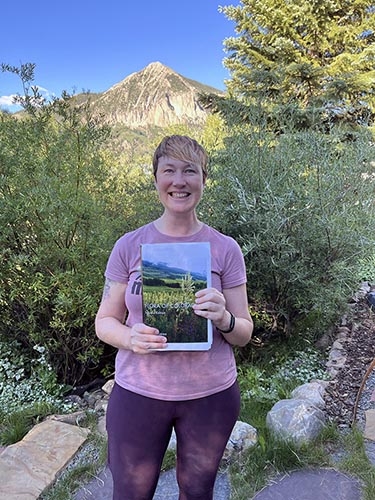Release of the Flora of Colorado, Second Edition
The “Flora of Colorado, Second Edition” release is just around the corner. You’ll be able to get your copy mid-November at the Shop at the Gardens. With the first edition published in 2015, it was definitely time for a revision. The second edition is chock full of updates and more informative content to help you identify plants confidently and as easily as possible. You will find numerous tools to help you in your identification journey – from updated nomenclature reflecting our most current phylogenetic knowledge, to more informative dot-distribution maps (instead of county-level distribution maps), an updated introduction detailing the different plant zones in Colorado and much more. An additional 400 color photographs, for a total of nearly 1,300 color photographs representing more than 40% of the flora are also included!
I am often asked what goes into writing a “Flora.” The process is certainly time-consuming and a labor of love. The first thing you need when compiling a “Flora” is a list of all species present in the area you are covering. I use a database to keep track of all the species present in Colorado. In this database, I can also keep track of any updates in nomenclature, as well as rare or endemic status, flowering times and elevation ranges. Herbarium specimens are vital to this database and form the foundation for the list of species in Colorado. For the second edition, I used the SEINet portal to look for species that were new to the state either from a range extension, a new invasive species or a new species to science, resulting in over 100 species added to the “Flora.”

The author with the second edition proof. Photo: Tom Zeiner
I also used the SEINet portal to download all distribution records for all the species known from the state. I then plotted these distributions in a GIS program to produce a dot-distribution map. But the process wasn’t quite this simple. Inherently, there are misidentifications in herbaria. I used this distribution maps and looked for outliers – dots that didn’t seem to represent the true distribution of a species. I then double-checked the identification of every one of these outliers. Time consuming? Yes! Vital for producing accurate maps? Also, yes!
Nomenclature updates were also not as simple as they sound. I first checked all the nomenclature for the first edition against the GBIF backbone taxonomy. But I didn’t take all these changes at face value. I analyzed every single nomenclatural change to double check that these changes also followed to the species concept I adhere to, the general lineage species concept. The Plants of the World online database was also used to check nomenclature when there were conflicts.
My photography skills certainly got better over the last 10 years, which is reflected in the updated color photographs. Additionally, I was able to use observations on iNaturalist to fill in some photographic gaps. I am always looking toward the future and encourage you to record the plants observed on your hikes, walks, and adventures to iNaturalist. I will be using these observations to make even more detailed distribution maps for the third edition.
Add new comment